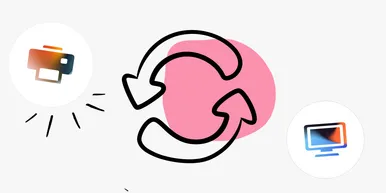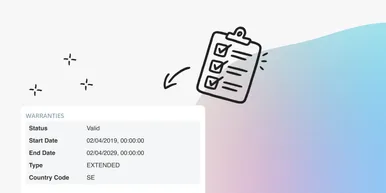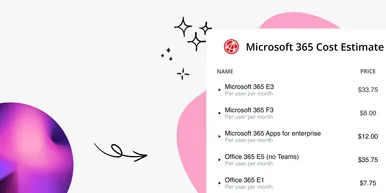
5 conversations every successful IT team needs to have
Teamwork. This topic seems to stir up emotions in most of us and some are more positive about it than others. Nonetheless, the majority of us encounter teamwork at one point or another during the course of our careers. So let’s make the best of it! It is important to reflect upon how you can achieve the greatest results while also ensuring a healthy work environment. Having open and sincere communication with your team can help you overcome some struggles that might emerge. Without further ado, let’s unfold five conversations every successful team needs to have!
1. Who are we?
A team is not a uniform entity but rather a set of unique individuals. Therefore you need to get familiar with all the members of your team to create a strong foundation for collaboration.
Who are they? What are their experiences? What are their expectations? How are their styles of work? What are their driving forces? To get a sense of who you are working with it is important to get to know each other before diving head first into your tasks. Plan a kick-off (virtual or physical) and get to know each other!
- Why are we here? Sometimes teams are created with a set agenda: this is what you are expected to do. Other times teams are formed to work with miscellaneous tasks. Regardless, teams should have some form of glue that motivates its members to work towards the same mission.
How you decide to motivate your team is up to you. One proven method to keep individuals on track is to set common objectives where each team member feels a sense of commitment to achieving their part of the shared goals. According to Harvard Business Review, objectives and key results (OKR’s) that focus on what the team accomplishes together has proven to be effective.
3. How do we prefer to communicate?
There are as many communication styles as there are people in the world. An article by Forbes highlights that there are four main types of communication styles: analytical, intuitive, functional and personal. A person with an analytical communication style likes hard data and numbers, the intuitive style focuses on the bigger picture, the functional type is concerned with the details and the personal communicator values connection and emotions.
In the initial phases of your teamwork you should get to know the communication styles of your team members. For example you could lay out this or similar frameworks and let them figure out which style they are. If you discuss this together it will also make it easier for everyone to understand how and why a team member might communicate the way they do. As soon as friction arises it will be easier to deal with using this framework as support since communication differences might be the root cause.
4. How do we have a good fight?
Let’s face it, where there are groups of people working together there will also be disagreements. Addressing how to have a good fight can be daunting at first, but most often it creates a sound team climate where members can appreciate their differences and air their opinions in constructive ways. But how do you do it?
One solution highlighted by management scholars is to focus on the issue, not the person. They discovered that the more data available, the better, since the members are all well informed and thus more prone to focus on the problem rather than speculations and opinions.
This, however, gives rise to a new problem: unsorted and chaotic data that does not make sense. In order for the data to be helpful it has to be presented in a way that is straightforward for the recipient. This can be achieved through having the right set of tools to facilitate information sharing. For IT teams specifically, an IT asset management tool that gathers all information in one place and lets you share it with your colleagues can help you avoid unnecessary frictions.
5. Agree upon a common set of rules
If team members are included in establishing the rules they are more likely to abide by them. Have discussions and follow-up questions concerning what types of behavior are accepted and not in your team. For example, is it okay to be five minutes late? If yes, how should we communicate that we are late? Should we inform the manager or the whole team? Is five minutes okay but not fifteen minutes? What are the repercussions if a team member is late? Is it acceptable at one occasion but not multiple times?
As you can see, there are many ifs and buts that need to be addressed in regards to a fairly common situation. It is better to have this conversation in the formation phase of the team rather later.
I think we can all agree on one aspect: teamwork is not easy. But having these conversations can make you better equipped to face uncomfortable situations once they emerge. Some common mishaps might be avoided altogether if you use the right collaboration tool, so make sure to equip your team with the best on the market. Good luck!
Related blog posts
All posts
Effective Configuration Management Requires Transparency Across All Systems
In modern IT environments, the gap between reported and actual configuration is bigger than most people realize. In this article, I explain why accurate inventory requires collecting data about each asset from multiple sources — not just one.

How Lifecycle Cost Analysis Helps You Make Smarter IT Decisions
IT teams are under constant pressure to deliver more with less. But without understanding the true cost of every server, license, or laptop, even the most well-planned budgets can spiral out of control.

How Microsoft's New Licensing Model Impacts You - and How to Prepare with vScope
Starting November 2025, Microsoft will remove volume discounts in Enterprise Agreement, MPSA, and OSPA. In this article, we explain what the change means for your organization, and how vScope helps you gain full visibility and control of licenses and costs across your environment.

Last Day for Windows 10 - Are Your Clients Ready?
As of October 15, 2025, Microsoft officially ends support for Windows 10. In this article, we explore what that means, why Microsoft is making this change, and how you can use vScope’s inventory and prebuilt insights to stay ahead.

Warranty Management in Practice: Checklist, Pitfalls, and How to Automate with vScope
Learn how to manage device warranties the right way. We walk through a step-by-step checklist for manual warranty tracking and how to automate follow-ups, reports, and alerts with vScope Discovery.

How to Optimize Microsoft Licenses to Save Both Money and Time
Keeping track of Microsoft licenses is one of the biggest challenges for many IT departments. With vScope’s new pre-packaged content, you gain better visibility and can easily identify hidden costs, inactive accounts, and overlapping licenses.

Optimize Your Database Environment: Pre-Built Content for Performance and Savings
Databases are the backbone of nearly every modern organization. From customer data to transactions and internal systems, your business relies on their performance and availability. In this post, we explore new content in vScope that helps you simplify and succeed in database management.

Tackling Application Chaos: Why Comprehensive Windows Application Inventory Matters
Managing software and applications across an IT environment is often more complicated than it seems. IT teams regularly face challenges such as uncertainty about which applications are actually in use, outdated inventories, or inefficient manual tracking processes. The larger and more dynamic your IT environment, the harder it becomes to keep track of software, leading to inefficiencies, higher costs, and potential security vulnerabilities.

Improve IT Service Management: How IT inventory supports you working in a service desk
Explore how vScope's IT inventory streamlines the daily work of Service Desk professionals, supporting troubleshooting, license verification, documentation, and proactive incident management.